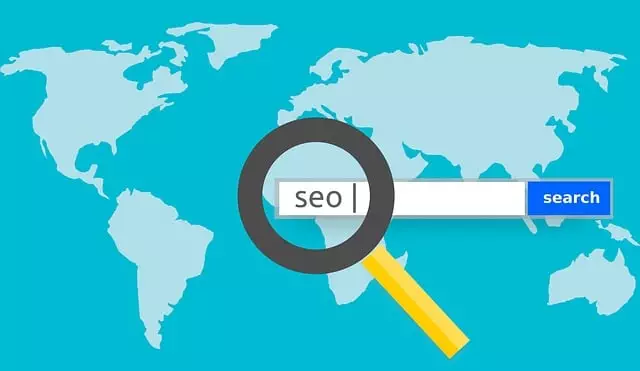A Technical SEO Audit is a comprehensive analysis that uncovers and rectifies technical issues hindering a website's online visibility, akin to navigating a labyrinth. By scrutinizing site structure, indexing, speed, mobile compatibility, and other aspects using specialized tools, experts can optimize user experience and search engine rankings. This process addresses problems like broken links, duplicate content, and loading times, ensuring the website is accessible and performant for both search engines and users, ultimately driving organic traffic and improving digital marketing strategies.
A technical SEO audit is an essential process for any website aiming to achieve top search engine rankings. This comprehensive guide delves into the fundamentals, highlighting why such audits are critical for online visibility. We’ll explore key components, from on-page issues to off-site considerations, and equip you with tools to navigate this complex task. Learn how to identify and resolve problems effectively, ensuring your site is optimized for both search engines and users, paving the way for continuous improvement in your SEO strategy.
Understanding Technical SEO Audit: The Basics

A Technical SEO Audit is a comprehensive evaluation process that scrutinizes a website’s technical aspects to ensure it aligns with search engine optimization (SEO) best practices. This audit goes beyond content and user experience, delving into the back-end architecture and infrastructure of a site. It’s akin to navigating a complex digital labyrinth, where every corner reveals potential improvements to enhance visibility and performance in search results.
By conducting a thorough SEO Audit, webmasters can uncover technical issues like broken links, slow loading times, mobile-unfriendly design, or inadequate XML sitemaps. Addressing these problems is vital as they can significantly impact a website’s ability to be crawled and indexed by search engines. Ultimately, an efficient audit helps in optimizing the site structure, improving crawlability, and ensuring that search engine bots can access and interpret all valuable content, leading to better rankings and increased organic traffic.
Why Conduct a Comprehensive SEO Audit?

Conducting a comprehensive SEO audit is an indispensable step for any website aiming to achieve and maintain online visibility. It serves as a detailed evaluation that uncovers the technical aspects of a site, often overlooked but pivotal for search engine optimization (SEO) success. By delving into metrics such as crawlability, indexing, site speed, and mobile-friendliness, this audit identifies areas where improvements can be made to enhance user experience and boost search rankings.
A thorough SEO audit provides a roadmap for optimizing digital assets, ensuring they align with the ever-evolving algorithms of search engines. It helps pinpoint technical issues like broken links, duplicate content, or site architecture problems that might hinder a website’s performance. Moreover, it offers insights into on-page elements, meta tags, and header structures, enabling webmasters to make data-driven adjustments for better search engine visibility and user engagement.
Key Components of a Technical SEO Audit

A comprehensive SEO Audit goes beyond surface-level analysis, delving into the technical intricacies that underpin a website’s online visibility. It involves meticulously examining various aspects such as site structure, indexing capabilities, and server performance. By exploring these elements, SEO experts can identify issues like broken links, duplicate content, or slow loading times—all of which negatively impact search rankings.
The key components of a Technical SEO Audit include analyzing website architecture to ensure it’s user-friendly and easily navigable for both search engine crawlers and visitors. It also involves checking sitemaps and robots.txt files for proper configuration, ensuring search engines can access and understand the site’s content effectively. Additionally, assessing mobile-friendliness, schema markup implementation, and secure sockets (HTTPS) are vital to guarantee a positive user experience across all devices and platforms.
Tools for Efficient Technical SEO Analysis

Performing a comprehensive SEO audit requires a robust set of tools tailored for technical analysis. These tools enable professionals to uncover issues that hinder search engine visibility and user experience. Site crawlers, such as Google Search Console or Screaming Frog, meticulously scan websites, identifying broken links, duplicate content, and other technical glitches. These insights are invaluable for troubleshooting and optimizing site structure.
Additionally, SEO analytics platforms like Ahrefs or SEMrush offer detailed reports on keyword rankings, backlink profiles, and competitors’ strategies. By integrating these data points with site performance metrics, experts can pinpoint areas for improvement during an SEO audit, ensuring the website is optimized for both search engines and users alike.
Identifying and Resolving On-Page Issues

A thorough SEO audit begins with a meticulous examination of each webpage on a website, uncovering both visible and hidden issues that may hinder search engine visibility. This involves scrutinizing on-page elements such as meta titles, headings, content quality, and image optimization. Identifying these issues is just the first step; resolution requires strategic interventions like updating content to be more keyword-rich, ensuring mobile responsiveness, fixing broken links, and enhancing internal linking structures.
By addressing on-page issues, website owners can significantly improve their site’s performance in search engine results pages (SERPs). This process not only boosts organic traffic but also enhances user experience, leading to higher engagement and reduced bounce rates. An effective SEO audit should always include a comprehensive analysis of these on-page factors, as they form the foundation for any successful digital marketing strategy.
Off-Site Considerations in SEO Audit Process

In a comprehensive SEO Audit, off-site considerations play a pivotal role in understanding and enhancing a website’s online visibility. This includes an analysis of the web’s external factors that impact search engine rankings. Key aspects involve evaluating backlinks, examining authority and relevance of referring domains, as well as assessing the overall online reputation of the site. High-quality backlinks from reputable sources significantly boost a website’s credibility in the eyes of search engines. Conversely, poor or low-quality links can lead to negative SEO implications, such as penalties or lower search rankings.
Moreover, understanding the landscape of competing websites is essential. An SEO audit should explore how competitors are performing in terms of off-site strategies, helping to identify successful tactics that can be adopted and areas where improvement is needed. This competitive analysis offers valuable insights into content creation, link building, and overall online marketing efforts, ultimately guiding strategies to outrank rivals and improve search engine visibility.
Implementing Post-Audit Strategies for Continuous Improvement

After conducting a comprehensive Technical SEO Audit, the next step is to implement post-audit strategies for continuous improvement. This involves taking action on the insights and recommendations generated during the audit process. Prioritize fixing critical issues that hinder search engine visibility and user experience, such as broken links, slow loading pages, or mobile usability problems. Create an actionable plan to address these issues within a defined timeframe.
Regularly monitor website performance using SEO tools and analytics platforms. Keep track of key metrics like organic traffic, bounce rate, and page rankings. By continuously evaluating the site’s health post-audit, you can identify areas that still need optimization. This iterative approach ensures that your SEO efforts remain dynamic and aligned with search engine algorithm updates, fostering long-term success in the digital landscape.
